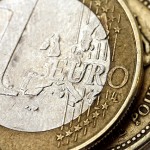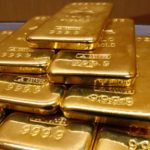Gold climbed on Wednesday to end three days of losses and trade above $1 200 as Federal Reserve Chair Janet Yellen indicated that a sooner interest rate hike is unlikely. Silver, platinum and palladium rose as well. Copper slid amid ample supply in China.
Comex gold for delivery in April gained 0.89% to $1 208.0 per troy ounce by 09:53 GMT, having shifted in a daily range of $1 211.7 and $1 200.7 an ounce. The precious metal slipped 0.29% during the previous session to settle at $1 197.3, having previously fallen to its lowest since January 5th at $1 190.0.
Ms. Yellen did not point out an exact date on the upcoming lifting of borrowing costs and said that policy makers will discuss the possibility meeting by meeting. The chief indicated that Fed officials will first drop their “patience” stance on the matter, which in no case will tie them to a certain timetable.
Ms. Yellen underscored the slow wage growth and low inflation in the US and said policy makers are unlikely to initiate their first interest rate hike since 2006 during their next couple of meetings.
Commenting on international factors, Yellen said that China’s growth may slow down even further as the country redirects its efforts away from investments and exports. While inflation is low and Europe’s growth maintains a slow pace, Ms. Yellen said that the recent launch of a stimulus program in the euro area should help progress.
However, Ms. Yellen warned that once policy makers remove their “patience stance”, an increase in interest rates “could be warranted at any meeting.”
The US dollar softened following the Fed chair’s speech. Ms. Yellen is set to testify before the House Financial Services Committee later today, when she is expected to restate her position on the US economy and monetary policy.
Howie Lee, an investment analyst at Phillip Futures, said, cited by CNBC: “We don’t think this rally will be sustainable. Ms. Yellen also made it abundantly clear that the US economy is recovering and she will be looking to normalize interest rates at one point. In the longer term that doesn’t spell much optimism for gold.”
The potential increase in borrowing costs would curb demand for all non-interest-bearing assets, including gold.
The US dollar index for settlement in March was down 0.32% at 94.255 at 09:53 GMT, holding in a daily range of 94.465 and 94.165. The US currency gauge slid 0.10% on Tuesday and closed at 94.561. A weaker greenback makes dollar-denominated commodities cheaper for holders of foreign currencies and boosts their appeal as an alternative investment.
Meanwhile, the precious metal also benefited from the return of China, the world’s second-largest gold consumer. The country’s markets were closed for a week as its citizens celebrated the New Lunar Year holiday, removing crucial support for prices.
The metal was trading $5 to $6 higher than the global benchmark in Shanghai, up from premiums of $3-$4 in the pre-holiday period, despite projections of lower demand after the break.
Assets in the SPDR Gold Trust, the biggest bullion-backed ETF, remained unchanged on Tuesday at 771.25 tons.
Copper
Comex copper for delivery in March traded 0.59% lower at $2.6325 per pound at 9:52 GMT, shifting in a daily range of $2.6550-$2.6265. The contract rose 2.14% on Tuesday to $2.6480 after it touched a six-week high of $2.6770.
The industrial metal slid as Chinese markets reopened after week-long holidays and resumed selling on the prospect of ample local supply.
Prices rose on Tuesday as the Greek debt deal relieved fears of an unprecedented euro-area exit, while Janet Yellens testimony before Congress caused a drop in the US dollar.
Data yesterday showed that the German economy expanded by an annualized 1.6% in the fourth quarter, outstripping projections for an 1.5% expansion, while the US services sector grew in February at the fastest pace since October. Consumer confidence in the US eased in February, the Conference Board reported, while the S&P/Case-Shiller House Price Index rose by an annualized 4.5% in December, compared to projections for 4.3%. Data later today may show that sales of newly built homes in the US slid on a monthly basis by 1.3% in January.
In China, manufacturing activity unexpectedly expanded this month, HSBC and Markit Economics reported, with the corresponding HSBC Flash China Manufacturing PMI rising to a four-month high of 50.1 from 49.7 in January, compared to expectations for a drop to 49.5.
The manufacturing output index reached a five-month high of 50.8. The report also showed that domestic demand improved but new export orders declined for the first time since April and both input and output prices remained in contraction.
Hongbin Qu, Chief Economist, China & CoHead of Asian Economic Research at HSBC said: “Today’s data point to a marginal improvement in the Chinese manufacturing sector going into the Chinese New Year period in February. However, domestic economic activity is likely to remain sluggish and external demand looks uncertain. We believe more policy easing is still warranted at the current stage to support growth.”
Providing support on the supply side, BHP Billiton Ltd., the world’s biggest mining company, announced plans on Monday to slash project spending to the lowest in five years, following up on similar measures taken by Rio Tinto, Glencore and Freeport-McMoRan.





